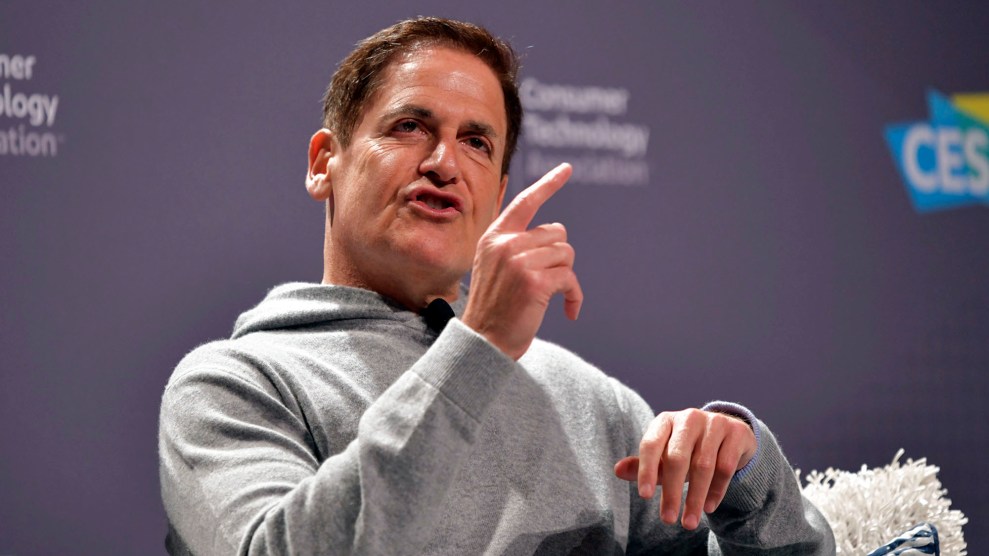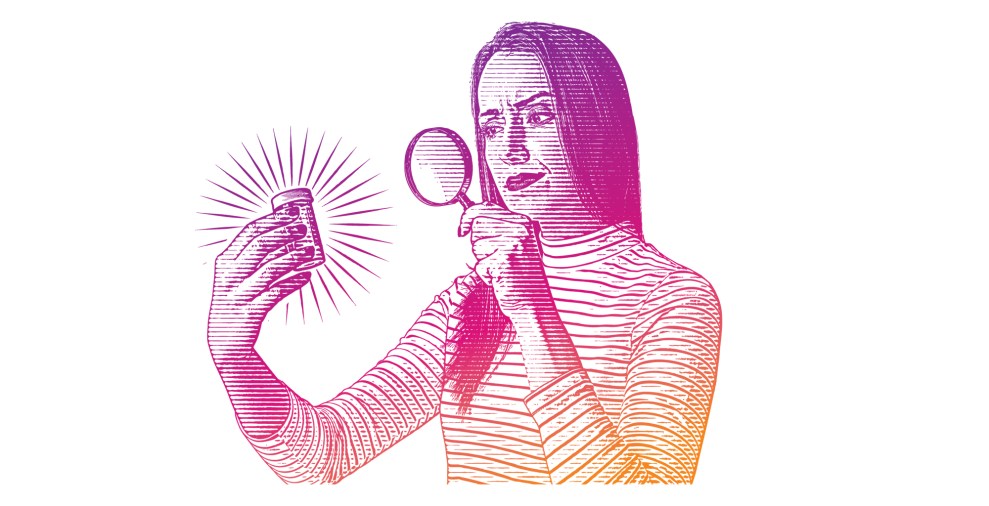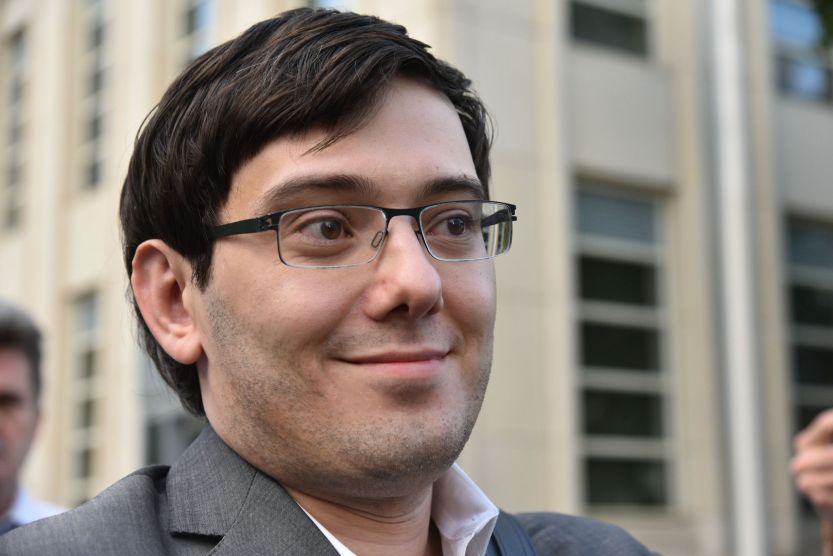
Mark CubanDamairs Carter/MediaPunch /IPX/AP
This story was originally published by Undark and is reproduced here as part of the Climate Desk collaboration.
In 2015, Martin Shkreli became the smirking face of drug company greed when, as founder and then-chief executive of Turing Pharmaceuticals, he bought rights to the anti-parasitic medication Daraprim and then jacked up the price from $17.60 to $750 per pill. At the time, the drug was the only therapy approved by the US Food and Drug Administration for toxoplasmosis, a disease that causes serious illness in people with weak immune systems, including babies born to mothers infected with the parasite, and those with HIV.
For Alex Oshmyansky, an emergency radiologist, Shkreli’s move was what tipped him over the edge. Fresh out of his radiology fellowship at Johns Hopkins University, the young doctor had already seen patients grow sicker and even die because they couldn’t afford their medications. He vowed to become the anti-Shkreli by starting a company to sell vital drugs at or near cost.
Three years later, Osh’s Affordable Pharmaceuticals had secured $1 million in funding. Shortly thereafter, Oshmyansky grabbed the attention of billionaire Mark Cuban. The Dallas Mavericks owner and one of the stars of the television show Shark Tank wound up going all in. In January, the Mark Cuban Cost Plus Drug Company opened shop online. The lofty aim, Cuban writes on the website, is “to disrupt the drug industry and to do our best to end ridiculous drug prices.”
The Mark Cuban Cost Plus Drug Company offers more than 100 generic drugs, which according the company, are priced at the cost of making them, plus a 15 percent markup and a $3 pharmacy fee. For someone without health insurance (which the company does not accept in the first place), or whose plan has high deductibles or copays, the savings can be dramatic. For example, the average wholesale price for a month’s worth of the cancer treatment imatinib (generic Gleevec) is $9,657, which you could cut to $120 with a coupon from the drug-tracking company GoodRx. Meanwhile, Cuban’s company offers a one-month supply for just $47.
Cuban and Oshmyanksy are not the first, nor the only ones taking on Big Pharma. In 2018, a group of health systems and philanthropists launched Civica Rx, a nonprofit that supplies hospitals with essential generic drugs. Today, the company sells about 55 medications to 1,400 hospitals at savings of about 30 percent compared to what they paid previously. The model has been so successful that the company is expanding into the consumer market with a new initiative, CivicaScript, which has partnered with Anthem and some Blue Cross insurance companies and expects to start selling drugs by mail order and through retail pharmacies later this year.
But David isn’t about to slay Goliath—at least not yet. That’s because by and large, name-brand medications, not generics, drive high drug costs. While generics comprise 84 percent of the prescription medications sold in the US by volume, they only account for 12 percent of spending, according to a recent report from the RAND corporation, a nonprofit policy think tank.
These new ventures, however innovative, only deal with a small set of generic drugs, said David Mitchell, president and founder of Patients for Affordable Drugs, a national nonprofit patient organization. For this reason, Mitchell said, the new companies won’t help people like him. He has multiple myeloma, a sometimes deadly blood cancer, and the four drugs keeping him alive retail for about $935,000 per year. Although Mitchell is covered by Medicare, he still winds up spending $25,000 annually on medications and specialty drug insurance to help pay for them.
“This model is not the comprehensive solution to our drug pricing issues in the country,” said Mitchell.
Poll after poll shows that the majority of Americans, regardless of political affiliation, support the government’s stepping in to contain drug prices, but so far, legislative efforts have stalled. In this vacuum, a new breed of entrepreneurs are betting that free-market strategies that emphasize the public good over profit can make progress where politicians haven’t. While it’s no small thing to make even a small percentage of drugs more affordable for the people who need them, the real disruptive power of the Mark Cuban Cost Plus Drug Company and Civica Rx is in demonstrating that it’s possible to challenge the health care industrial complex and live to tell the tale.
American pay more for brand-name drugs, said Mitchell, because unlike in other developed countries, the US government doesn’t negotiate drug prices. Thanks to patents and exclusivity rights granted by the FDA, drug companies get to sell new products for about 12 to 16 years without competition from generic versions. In principle, this arrangement allows drugmakers to recoup R&D expenses, and sets an incentive for companies to develop new drugs. But during this monopoly period, drug makers are free to name their price, leading to rates that many advocates consider unacceptable. “We are price takers. And the drug industry has the power to be the price setters,” said Mitchell. “That’s why drugs are so expensive.”
In general, once generics hit the market, the competition drives prices down. But it doesn’t always work that way. Drugs for rare conditions such as certain cancers may not have enough of a market to interest many generic makers, for example. And when prices dip too low, some competitors drop out, leading to drug shortages and price hikes by remaining manufacturers.
Drug pricing typically works by using intermediary companies known as pharmacy benefit managers, or PBMs, to negotiate rebates for insurers and, in turn, keep a sizeable bounty. So, even though a PBM may negotiate 90 percent off the price of imatinib, employers and people with high-deductible plans still wind up paying about $3,200 monthly until their deductible is met—for a drug that costs about $35 to make, said Oshmyansky. The Mark Cuban Cost Plus Drug Company’s strategy is to eliminate these middlemen.
“It seems like a great deal. You got 90 percent off, but the number you got the price off is completely made up. And it’s crazy,” he said of the current system. “So, that’s how we’re able to get the price down to $47 for a month’s supply.”
Like the Mark Cuban Cost Plus Drug Company, Civica Rx creates a direct route from the manufacturing facility to the customer. The company keeps the supply chain short, sourcing drugs from the U.S. where possible, and it negotiates directly with suppliers. (Both companies are also building their own drug manufacturing plants in the U.S.)
“The generic drug market traditionally functions like a commodity market, with prices fluctuating wildly and with a lot of middlemen entities negotiating prices,” said Allan Coukell, Senior Vice President of Public Policy at Civica Rx. By contrast, he said, Civica Rx’s pricing is transparent and the same for everyone. “There’s no discounts or rebates or negotiation on that; it’s as low as we can sustainably make it.”
However, to work with insurers and sell drugs through pharmacies, the new CivicaScript initiative will have to work through traditional channels, including PBMs, said Coukell. “We’re working with all of those entities, but in a way that will make sure that the drugs are not marked up unreasonably along the chain before they get to the patients.” To test the waters, they are starting small, with six to ten high-priced generics.
Shannon Rotolo, a clinical pharmacy specialist at the University of Chicago Medicine, points out that neither of these ventures will help her patients who often require expensive specialty therapies for conditions such as cystic fibrosis, asthma, and lupus. And even for generic drugs, there are downsides to having to shop around, she said. “The risk of that is splitting up people’s pharmacies.” You lose the interaction with a pharmacist who knows you, has a list of all your medications, and can, say, call your doctor when you need a refill.
Further, Rotolo pointed out that Cuban’s company doesn’t take insurance, so the cost of the drugs won’t count toward a deductible. That could delay or prevent patients from getting to the point where they have better coverage for all their medications.
Rotolo helps patients find workarounds to try to make drug more affordable such using a drug-company coupon, getting financial assistance through a nonprofit organizations such as the Patient Access Network Foundation, or even bypassing insurance when the cash price is cheaper. “But it’s just an incredible burden on the patient,” she said. Like Oshmyansky, she’s grown tired of watching patients fight insurance companies and do without other necessities to get their medications. In her case, though, her experience has turned her into an advocate for a single-payer system.
In 2020 Rotolo co-founded Pharmacists for Single Payer, and she also works with other advocacy groups at the state and national level. “The appeal of a single-payer system from a pharmacy perspective, would be the idea of no copays, no deductibles, just knowing that the medication that patient needs is going to be covered without them having to worry about the cost,” she said.
Rotolo knows that a single-payer system is a long shot, but nonetheless with stories of people’s struggle to access health care during the pandemic rising up, she feels change coming. Her friends that work for health insurers or PBMs talk about how the status quo is just not a sustainable model, she said. “And they kind of are starting to think of it as like a rush to make all the money before it all crashes.”
“A lot of observers are unhappy with the status quo,” said economist Murray Ross, director for the Institute for Health Policy at Kaiser Permanente. “You know, it would be nice if we could wave a magic wand, fix the patent process, create competitive markets, et cetera.” But that’s just not possible in the short run, he said. Instead, reform may advance incrementally through both the free market and legislation like the Build Back Better Act, which passed the House of Representative but was stalled in the Senate.
Kaiser hospitals have benefited from a cheaper, more consistent supply of generic insulin, blood pressure drugs, and other vital medications after contracting with Civica Rx, Ross said. As for brand-name drugs, reforms such as those in the Build Back Better Act might help—for instance, allowing the federal government to negotiate prices for some high-cost drugs covered under Medicare and limit price increases on some drugs to the rate of inflation.
The reforms currently on the table don’t go as far as patient advocate David Mitchell would like, but he said just giving the government any power to negotiate pricing is an important step. “And that’s frequently the way large reforms happen,” said Mitchell. “They don’t happen all in one fell swoop. You pass a law that makes a change, and then you build on it.”
It’s worth noting that even in the current no-holds-barred market, greed doesn’t always win. In January, a federal court ruled in favor of the Federal Trade Commission and seven states, finding that as head of Vyera Pharmaceuticals (formerly Turing Pharmaceuticals), Martin Shkreli broke state and federal laws in stifling competition to maintain his monopoly on Daraprim. The judge ordered Shkreli, who is currently serving out a seven-year sentence for securities fraud in an unrelated case, to pay the plaintiffs nearly $65 million, and banned him from the pharmaceutical industry for life.
Meanwhile, Oshmyanksy is continuing to plunk stones at the pharmaceutical behemoth with his slingshot. While he hasn’t yet caused any real pain, he has revealed the middlemen in the drug pricing scheme as a point of vulnerability. And he plans to take aim at the brand-name market where, as with ultra-high-cost generics, a disproportionate amount of the revenue goes to intermediaries rather than to the people making the drugs. If those stones land, they are likely to hurt.
“I don’t think we’ll have the same order-of-magnitude differences as we go over to those drugs,” he said. “But I think to some extent, we’ll be able to impact those prices as well.”
But can that strategy truly take down an entrenched and extraordinarily profitable market? “People ask me all the time, ‘Well, why are you trying to do all this? Isn’t it better to advocate for policy change?’” said Oshmyansky. As a radiologist from central Montana, he said he has no power to sway Congress. “But I can make cheap medicine. I can just do that.”













